We may earn money or products from the companies mentioned in this post.
How to Dress for Your Body Shape Without Feeling Restricted: A Guide to Confident Style Choices
Dressing for your body shape doesn’t have to mean following strict rules or giving up your personal style. Many people think they need to hide certain parts of their body or only wear specific types of clothes. This approach often leads to feeling limited and frustrated with your wardrobe choices.
The key to dressing for your body shape is learning which styles make you feel confident and comfortable while still expressing your unique personality. You can highlight your favorite features without completely changing how you dress. The goal is to work with your natural shape, not against it.
Your body shape is just one factor to consider when choosing clothes. You can use basic styling principles as helpful guidelines while keeping your favorite colors, patterns, and trends. This way, you’ll build a wardrobe that feels authentic to you and makes getting dressed each morning easier and more enjoyable.
Understanding Body Shape Basics
Knowing your body shape helps you choose clothes that make you feel good. Every body is different, and understanding these differences makes shopping easier and builds confidence.
Identifying Your Body Shape
You can find your body shape by taking three simple measurements. Use a soft measuring tape to measure your bust, waist, and hips.
Measure your bust at the fullest part of your chest. Keep the tape straight across your back.
Find your natural waist by bending to one side. The crease that forms is your waistline. Measure around this spot.
For your hips, measure around the fullest part of your bottom and hips. This is usually about 7-9 inches below your waist.
Write down these numbers. Compare them to see which areas are larger or smaller. This tells you your basic body shape.
You can also look in a full-length mirror. Stand straight and notice where your body is wider or narrower.
Common Body Shapes Explained
There are five main body shapes that most people fit into. Each shape has different features.
Hourglass bodies have bust and hip measurements that are about the same size. The waist is much smaller than both.
Pear shapes have hips that are larger than the bust. The waist is well-defined and smaller than both areas.
Apple bodies carry more weight in the middle. The waist is larger than the hips, and the bust may be full.
Rectangle shapes have bust, waist, and hip measurements that are close to the same size. There is less of a curve between these areas.
Inverted triangle bodies have shoulders and bust areas that are wider than the hips. The waist may be less defined.
Embracing Your Unique Silhouette
Your body shape is just a starting point, not a rule book. Many people have features of different shapes.
You might be between two shapes or have unique features that don’t fit perfectly into one category. This is completely normal.
Focus on what you like about your body. Maybe you love your strong shoulders or your curvy hips. Choose clothes that highlight these features.
Remember that body shapes can change over time. Your shape might shift due to age, exercise, or life changes.
The goal is to feel comfortable and confident. Use body shape guidelines as helpful hints, not strict rules. Trust your own judgment about what makes you feel good.
Your personal style matters more than following every body shape rule perfectly.
Choosing Flattering Outfits Without Feeling Restricted
The best outfits let you move freely while looking great. Focus on clothes that give you room to breathe and fabrics that move with your body.
Prioritizing Comfort and Mobility
Your clothes should never hold you back from living your life. When you can move easily, you feel more confident and relaxed.
Look for pants with a bit of stretch in the waistband. This gives you comfort without losing shape. Elastic waistbands or drawstrings work great for casual looks.
Choose tops that don’t pull across your chest or shoulders. You should be able to lift your arms without your shirt riding up. Test this by reaching overhead when trying clothes on.
Key comfort features to look for:
- Side vents in shirts
- Stretchy materials
- Adjustable straps
- Loose armholes
- Flexible waistbands
Shoes matter too. Pick heels you can walk in easily. If you wobble, go lower or choose flats.
Your bra should fit properly. A good bra gives support without digging into your skin. Get fitted at least once a year, since your size can change.
Picking Fabrics and Fits That Breathe
Natural fabrics like cotton and linen let air flow through them. This keeps you cool and comfortable all day long.
Cotton works great for t-shirts and casual pants. It’s soft and easy to care for. Linen is perfect for summer because it’s very breathable.
Jersey knits stretch with your body. They’re great for dresses and tops that need to move with you. Look for cotton-spandex blends that snap back into shape.
Avoid heavy fabrics that don’t breathe well. Thick polyester can trap heat and make you sweat. Choose lighter weights instead.
Best fabric choices:
- Cotton blends
- Jersey knits
- Bamboo fabric
- Modal
- Lightweight wool
The fit matters as much as the fabric. Clothes that are too tight restrict airflow. Leave some room between your skin and the fabric.
Look for A-line dresses and tops. They give you space without looking baggy.
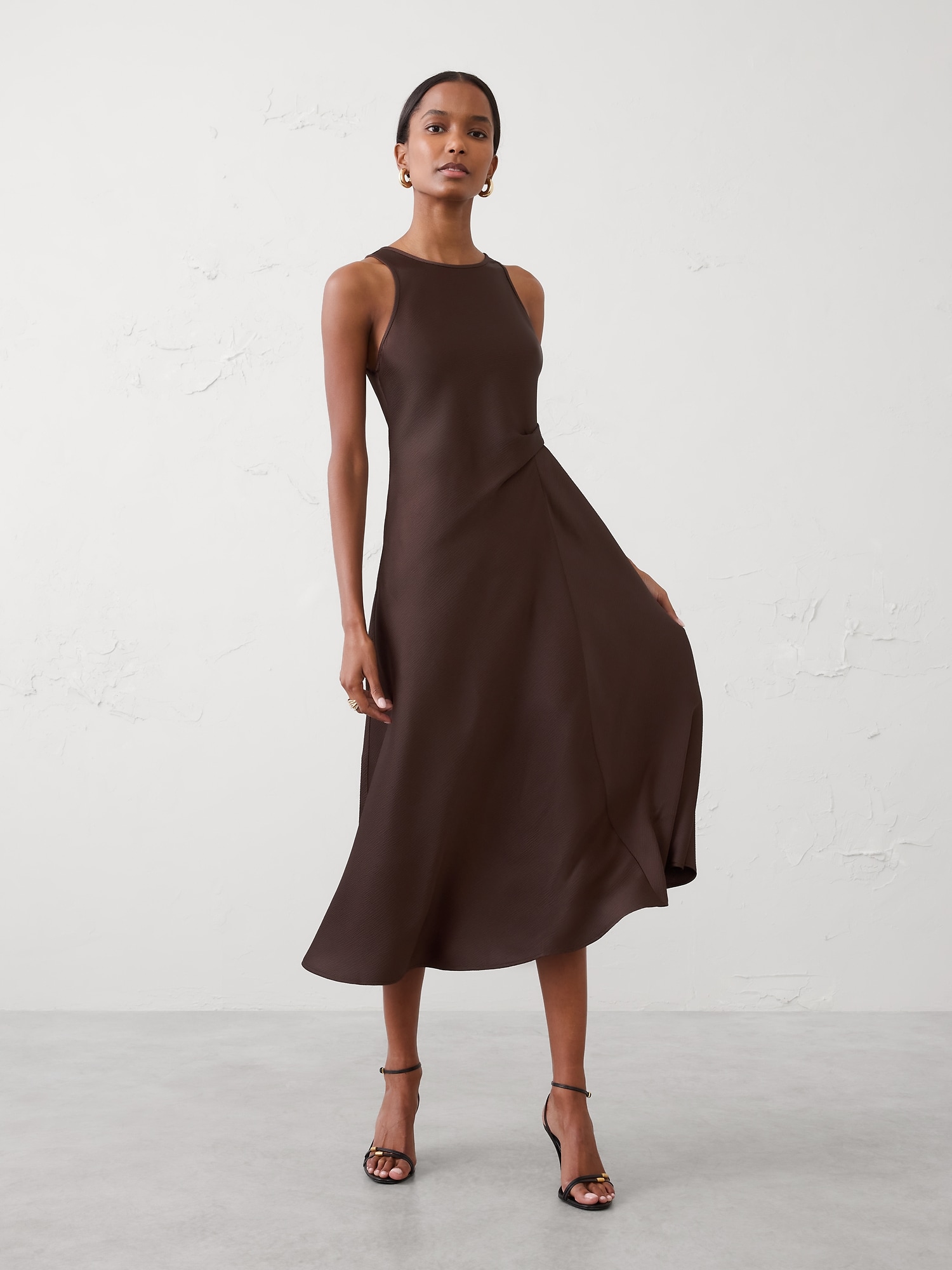
Shop: Outfit
Avoiding Overly Tight or Stiff Clothing
Tight clothes might look good in photos, but feel awful to wear. They can dig into your skin and make you uncomfortable all day.
Check for red marks after trying on clothes. If something leaves marks on your skin right away, it’s too tight. You’ll be miserable wearing it for hours.
Stiff fabrics like heavy denim or structured blazers can feel like armor. Choose softer versions that bend with your body instead.
Watch out for these problem areas:
- Waistbands that dig in
- Sleeves that pinch your arms
- Necklines that feel choking
- Pants that squeeze your thighs
Signs clothes are too restrictive:
- Can’t sit down comfortably
- Fabric pulls or gaps
- Hard to breathe deeply
- Marks on the skin after wearing
Choose clothes one size up if you’re between sizes. It’s easier to take things in than let them out. Plus, you’ll feel better in clothes that fit properly.
Structured pieces like blazers can still work. Look for ones with stretch or softer construction. Many brands now make blazers that look formal but feel like sweatshirts.
Styling Tips for Different Body Shapes
Each body type has unique features that certain clothing styles can highlight beautifully. The key is choosing pieces that make you feel comfortable and confident while working with your natural proportions.
Outfit Ideas for Curvy Figures
Your curves are an asset, and the right clothes can show them off perfectly. Look for pieces that define your waist and follow your body’s natural lines.
Wrap dresses work amazingly well for curvy figures. They cinch at the smallest part of your waist and create a flattering silhouette. Choose fabrics that drape nicely without clinging too much.
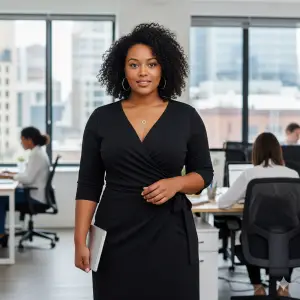
Shop: Dress
For tops, try these options:
- Fitted blazers that nip in at the waist
- V-neck sweaters that elongate your neckline
- Peplum tops that highlight your waist
When picking bottoms, go for high-waisted jeans or A-line skirts. These styles sit at your natural waist and create smooth lines. Avoid baggy clothes that hide your shape completely.
Belt everything you can. Adding a belt to dresses, cardigans, or loose tops instantly creates definition. Choose medium-width belts that sit comfortably at your waist.
Shop: Outfit
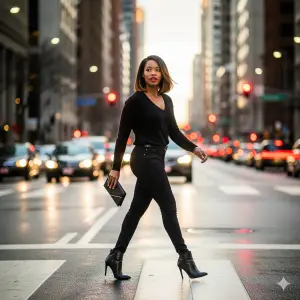
Attire Tricks for Petite Builds
Your goal is to create length and avoid being overwhelmed by your clothes. Small details make a big difference in how proportioned you look.
High-waisted bottoms are your best friend. They make your legs look longer and create the illusion of height. Pair them with cropped or tucked-in tops.
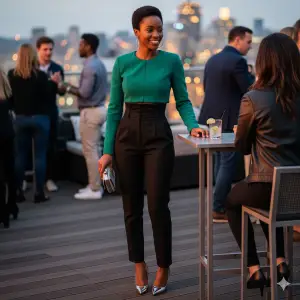
Choose these pieces carefully:
- Cropped jackets that hit at your hip bone
- Mini and midi skirts instead of long ones
- Straight-leg or skinny pants in solid colors
Vertical stripes help you look taller. Wear them in tops, dresses, or even pants. Avoid horizontal stripes that can make you appear wider.
Keep accessories smaller in scale. Large bags or chunky jewelry can overwhelm your frame. Pointed-toe shoes also help elongate your legs.
Monochromatic outfits create an unbroken line from head to toe. This makes you appear taller and more streamlined.
Looks That Complement Athletic Frames
Your strong, straight build looks great in clothes that add curves and softness. Focus on creating shape where you want it most.
A-line and fit-and-flare dresses add movement and femininity to your silhouette. Look for styles with interesting necklines or sleeve details.

Shop: Outfit
Try these styling tricks:
- Layer different textures like soft knits over structured pieces
- Add volume with ruffles, pleats, or gathers
- Choose lighter colors for areas where you want more curves
For work or casual wear, peplum tops create the illusion of curves at your hips. Wide-leg pants also add volume to your lower half.
Experiment with patterns and prints. Your straight frame can handle bold designs that might overwhelm other body types. Floral prints and geometric patterns both work well.
Don’t be afraid of fitted clothes. Your athletic build looks amazing in well-tailored pieces that show off your strong shoulders and toned arms.
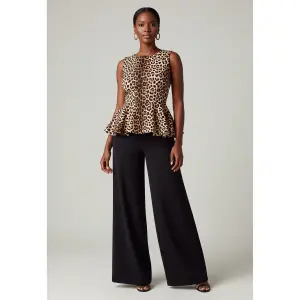
Style Suggestions for Tall Bodies
Your height is an advantage that lets you wear styles others can’t pull off. The trick is choosing proportions that flatter your long lines.
Maxi dresses and long coats look stunning on tall frames. You can handle floor-length pieces without being overwhelmed. Look for styles with interesting details to break up the length.
Create visual interest with these techniques:
- Layer different lengths like long cardigans over shorter tops
- Mix patterns and textures within one outfit
- Add horizontal elements like wide belts or contrasting trim
Wide-leg pants and palazzo styles complement your long legs perfectly. Cropped pants also work well and show off great shoes.
Don’t shy away from oversized pieces. Chunky knit sweaters, boyfriend blazers, and loose-fitting tops look effortlessly chic on tall bodies.
Bold accessories work beautifully with your frame. Large handbags, statement jewelry, and dramatic scarves all complement your natural presence.
Expressing Personal Style Confidently
Your personal style should shine through regardless of your body shape. The right use of colors, accessories, and layering helps you stay true to yourself while looking great.
Incorporating Colors and Patterns
Bold colors can highlight your favorite features. If you love your shoulders, try bright tops. Want to draw attention to your legs? Pick colorful pants or skirts.
Patterns work for every body type when you place them right. Vertical stripes make you look taller. Small patterns work well on areas you want to downplay.
Mix patterns carefully. Start with one bold pattern and add a simple one. A floral top looks great with thin striped pants.
Dark colors don’t always mean slimming. Navy, deep purple, and forest green add richness to your look. Use them where you want a classic feel.
Try the 60-30-10 rule:
- 60% neutral base color
- 30% secondary color
- 10% accent color
This keeps your outfit balanced while showing your style.
Accessorizing Without Overwhelming
Start with one statement piece. Pick either bold earrings, a bright scarf, or a chunky necklace. Not all three at once.
Belts define your waist and add interest. Wide belts work great over dresses or long tops. Thin belts add detail without bulk.
Bags should fit your frame. Small purses look best on petite frames. Larger bags work well if you’re taller or curvier.
Shoes change everything. Pointed toes make legs look longer. Block heels give height with comfort. Ankle straps can shorten legs, so be careful with placement.
Layer jewelry thoughtfully. Stack thin rings or bracelets. Mix metals if you like, but keep the overall look clean.

Shop: Bracelet Stack (my current fave)
Layering Techniques for All Seasons
Light layers work year-round. Try a tank top, cardigan, and light scarf. You can remove pieces as needed.
Fitted base layers prevent bulk. Start with clothes that hug your body, then add loose layers on top.
Open cardigans and jackets create vertical lines. They make you look taller and don’t add width to your middle.
Scarves add color and texture. Long scarves create length. Square scarves work well tied at the neck or draped over shoulders.
Spring and summer: Light blazers over dresses. Kimonos over tank tops. Denim jackets over sundresses.
Fall and winter: Sweaters under coats. Turtlenecks under dresses. Vests over long sleeves.
Keep proportions in mind. If your top layer is loose, make sure your bottom layer fits well.
Building a Comfortable and Versatile Wardrobe
A smart wardrobe works with your body instead of against it. The right pieces mix easily and make you feel confident every day.
Wardrobe Essentials for Every Body Shape
Every great wardrobe starts with basic pieces that fit well and work together. These items form the foundation of your daily outfits.
Well-fitting jeans are your priority. Look for a pair that sits comfortably at your waist without pinching. The legs should skim your body without being too tight or loose.
Love These!

Shop: Jeans
A classic white button-down shirt works for almost any body shape. You can wear it tucked in, tied at the waist, or open as a light jacket. Choose one with some stretch for comfort.
A-line skirts and dresses flatter most body types. They create a nice shape without being tight. Look for ones that hit at your most flattering length.
Add comfortable blazers that you can move in easily. They instantly make any outfit look more put-together. Pick neutral colors like navy, black, or gray first.
Stretchy tops in solid colors give you endless mixing options. V-necks work well for most people. Scoop necks and crew necks are also good choices.
Investing in Quality Basics
Good basics cost more upfront but save you money over time. They also look better and feel more comfortable than cheap alternatives.
Focus your budget on pieces you wear most often. A quality pair of jeans that fits perfectly is worth the extra cost. The same goes for bras, underwear, and shoes.
Natural fabrics like cotton, wool, and silk feel better against your skin. They also last longer than synthetic materials. Look for blends that add stretch for comfort.
Proper fit matters more than brand names. A $30 shirt that fits you well looks better than a $100 shirt that pulls or gaps. Always try things on when possible.
Take care of your quality pieces properly. Follow washing instructions and store them correctly. This helps them keep their shape and color longer.
Mixing and Matching Outfits Easily
Smart shopping means buying pieces that work together in multiple ways. This gives you more outfit options with fewer items.
Stick to a simple color palette when building your wardrobe. Choose 2-3 neutral colors as your base. Add 1-2 accent colors you love.
| Base Colors | Accent Colors |
|---|---|
| Black, white, gray | Red, blue |
| Navy, cream, brown | Green, purple |
| Beige, white, olive | Pink, orange |
The rule of three makes mixing easier. If you can create three different outfits with one new piece, it’s worth buying.
Think about different occasions when shopping. A dress that works for work and dinner gives you more value. Pants that go from casual to dressy are wise choices.
Layer pieces to create new looks from the same items. A summer dress becomes a fall outfit with tights and a cardigan. A work blouse looks casual under a sweater.
5 Effortless Outfit Formulas for Busy Mornings That Will Save You Time and Stress

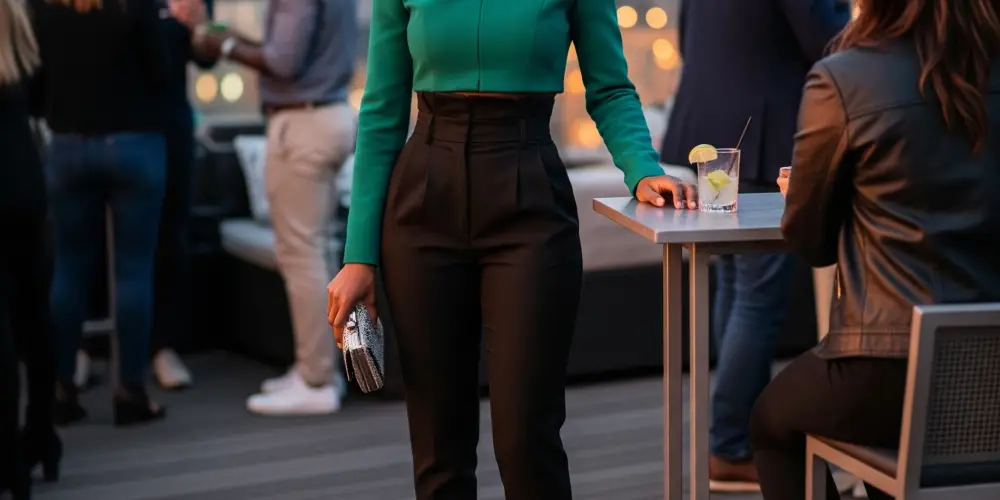

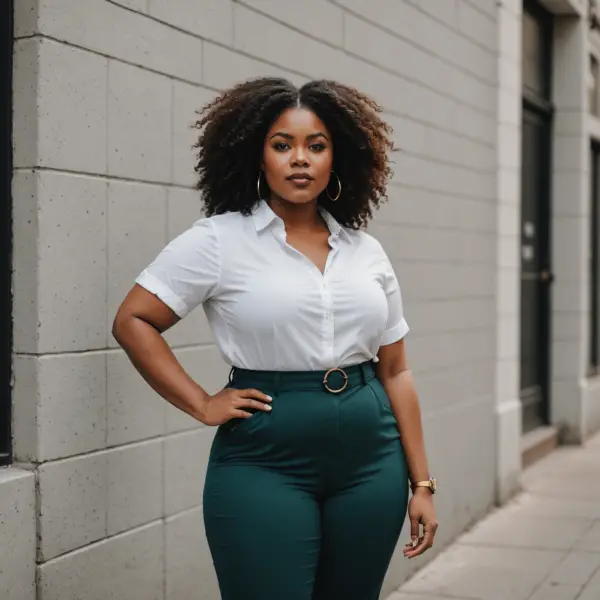
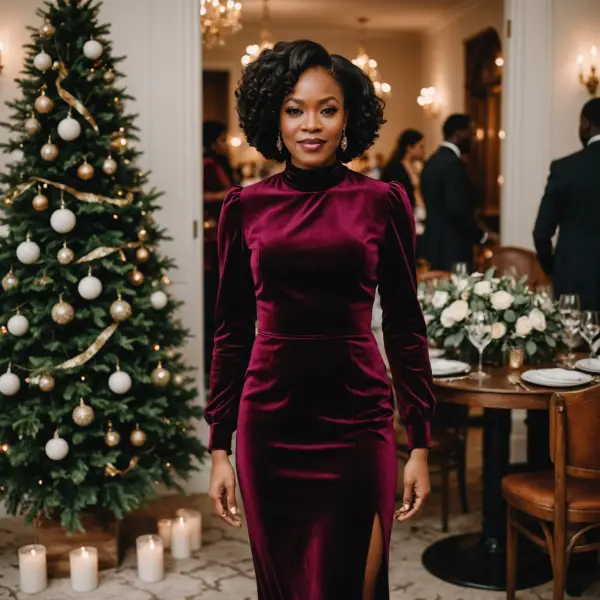
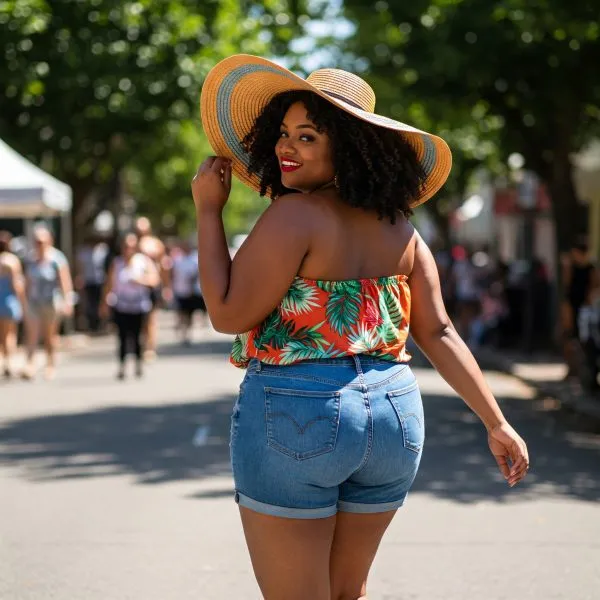
Leave a Reply